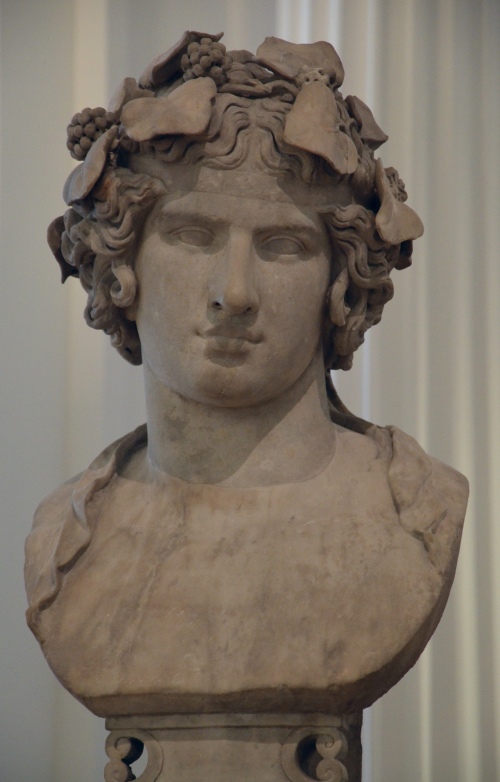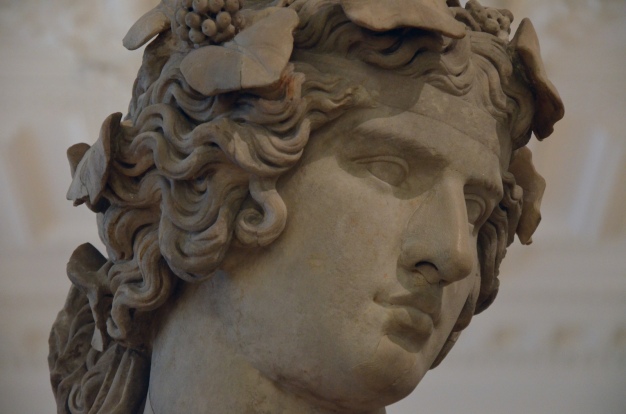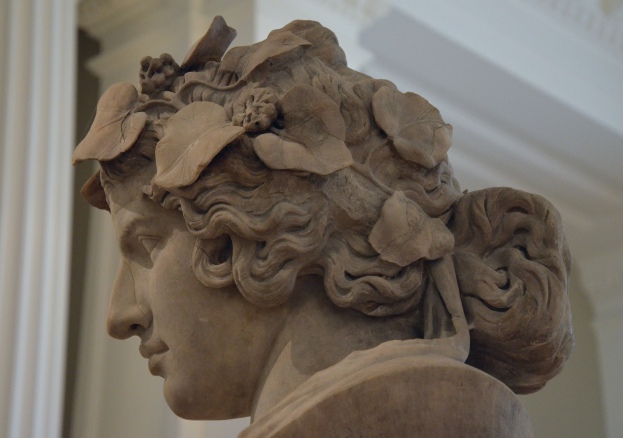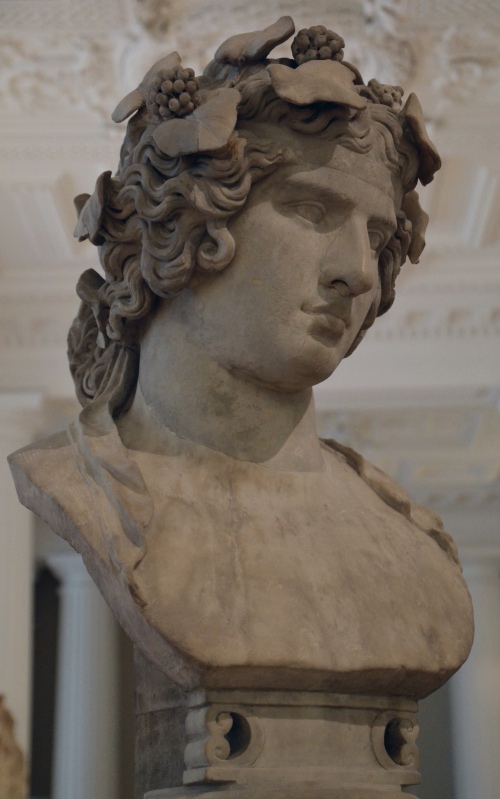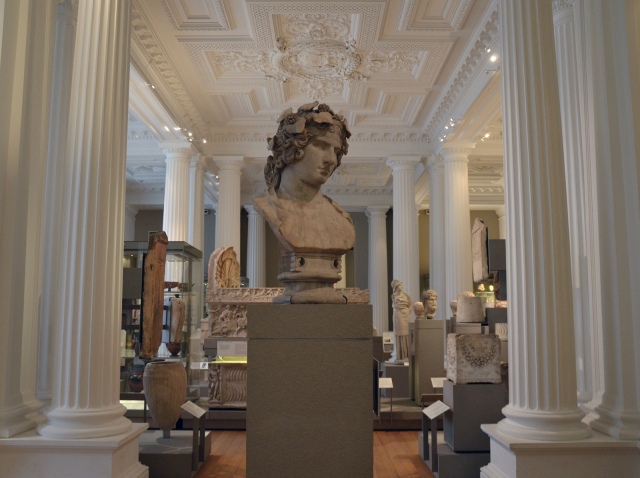This week’s sculpture from Hadrian’s Villa is a marble head of Antinous depicted as the god Dionysos, the closest Greek equivalent to the Egyptian god Osiris. It was unearthed in 1769 during excavations undertook by the art dealer and archaeologist Gavin Hamilton who secured it for Lord Lansdowne. The latter was an avid collector of antiquities and owned a fine collection of classical sculpture until most of it was sold and dispersed in 1930 (including the Lansdowne Amazon and the Lansdowne Hercules). Today the Lansdowne Antinous graces the “Greece and Rome” room of the Fitzwilliam Museum in Cambridge, England.
This portrait head of Antinous was once part of an over life-size statue showing Antinous as the Greek god of wine, Dionysos. As was custom of the period, the missing pieces on the Lansdowne Antinous were restored in the 18th century and the head was mounted on a modern bust. The facial restoration included the tip of the nose, the upper lip, part of the ears and part of the chin.
Through the elaborate and luxuriant hair runs a wreath of ivy, very much undercut, so that the several leaves are almost detached. The head is also bound with a broad taenia, a ribbonforthehair which passes across the forehead.
The Fitzwilliam Museum displays three other items from Hadrian’s Villa in Tivoli; two pilaster capitals with ornate acanthus leaf decoration, and a relief (known as the Lansdowne Relief) made from dark grey limestone and beautifully decorated with scenes from Greek mythology, all of which are connected to the sea.
Bibliography:
*Christie’s, The Lansdowne Collection of Ancient Marbles, London, 5 March 1930, p. 66, no. 101
*A Catalogue of the Ancient Marbles at Lansdowne House, based upon the work of Adolf Michaelis Cat. no. 64 (pdf)
*C. W. Clairmont, Die Bildnisse des Antinous, Schweizeriches Institut in Rom, 1966, p. 16, no. 8
*H. Meyer, Antinoos (1991) 116 ff. Nr. III 6 Taf. 104
*L. Budde – R. Nicholls, A Catalogue of the Greek and Roman Sculpture in the Fitzwilliam Museum Cambridge (1964) 68 Nr. 10
Originally published on Following Hadrian, republished with permission.
